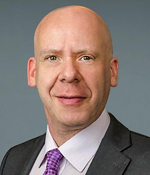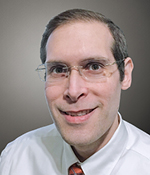Lung Cancer Screening: Why it Feels Like We Have More to Do
A common source of frustration for radiologists is that while lung cancer screening is proven to work and is widely available, it’s still not universally used.
Read more
The ACR Continuous Professional Improvement (CPI) Program provides the most current, content-rich casework directly from present day practices of leading subspecialists. More than 200 distinguished experts create CPI self-assessments in essential areas of ABR-required study. The program’s editors-in-chief, editors, reviewers, authors and staff are passionate about continuous professional development and the importance of continuous education in radiology.
 |
| Douglas S. Katz, MD, FACR, FSAR, FASER |
 |
| Meir H. Scheinfeld, MD, PhD |
The newest module, CPI Emergency & Trauma Imaging Module 2024, is chaired by Douglas S. Katz, MD, FACR, FSAR, FASER, professor and vice chair for research in the department of radiology at NYU Langone Hospital, and Meir H. Scheinfeld, MD, PhD, division head of emergency radiology at Montefiore Medical Center and professor of radiology at the Albert Einstein College of Medicine. CPI staff spoke with Katz and Scheinfeld about their thoughts on the module and their hopes for learners.
DSK: As the ultimate general specialty in radiology, we included many diverse areas of relevance to practice — for both emergency and general practitioners — as well as to trainees at all levels. We placed an emphasis in the module on trauma, guidelines and on noninterpretive skills, as well as practical information. We included more cases featuring sonography and pediatric radiology. With the expanded image format, we included 40 image-based questions and 10 non-image-based questions as well as additional images in the rationales.
MS: The module was developed by emergency radiologists and subspecialty radiologists who read and teach emergency imaging. Each question was constructed to deliver specific teaching points both in the correct answers and through the explanations of the incorrect answers. Extensive efforts were made to incorporate illustrative annotated companion cases. The breadth of this module will appeal to general radiologists, subspeciality emergency radiologists and subspecialty radiologists who cover the emergency department on call and residents preparing for board examinations.
We are happy to provide this resource to learners of all levels in the hope they find it worthwhile, challenging and educational regardless of experience.
DSK: In the last 28 years, I have been an attending in general radiology, body imaging and emergency imaging — and have had a diverse academic career, affording me editorial, writing and teaching opportunities. As a medical student, I was immediately drawn to radiology, particularly pediatric radiology, as it was clear that we were the “doctor's doctor” as well as the patient's doctor. I never turned back after my first rotation in the third year of clinical work in medical school.
MS: During residency, I was interested in the scope and acuity of emergency radiology, leading me to accept a fellowship in the relatively new subspeciality. I have been an emergency radiologist ever since, working overnight clinically and leading the division of emergency radiology at Montefiore.
DSK: The challenge for all of us is the extremely broad spectrum of the field. The challenge of not knowing what is going to walk in the door next (simple or highly challenging) and requirements to keep up with changing guidelines and changing technology — plus the burden of increasing volumes and workforce challenges. We hope that the information provided will be highly practical and useful to everyone within multiple scopes of practice.
MS: We have incorporated classic core topics such as musculoskeletal trauma and visceral trauma as well as newer topics and techniques such as brain perfusion imaging, dual-energy CT and emergency department applications of body MRI. I would encourage radiologists to pay close attention to these newer topics as our workload continues to grow and the scope of practice continues to evolve. Adding these techniques to our repertoire leads to better patient care and outcomes in the dynamic environment that is emergency and trauma radiology.
DSK: The cases in this module were meticulously planned by a group of subspecialist experts who brought “head-to-toe” knowledge and expertise to the module creation process. I would like to express my gratitude for their focus on providing the most relevant and current teaching points in emergency and trauma imaging. We are happy to provide this resource to learners of all levels in the hope they find it worthwhile, challenging and educational regardless of experience.
MS: I would recommend that, even when you answer a question correctly, you look at the explanations for the incorrect choices. The authors put substantial effort into incorporating teaching points and companion cases in these explanations. I would like to thank all module question authors who volunteered to construct this module.
Interview by Melissa Parker, Education Specialist, ACR Press
Lung Cancer Screening: Why it Feels Like We Have More to Do
A common source of frustration for radiologists is that while lung cancer screening is proven to work and is widely available, it’s still not universally used.
Read more
Start a Resolution
Composing and submitting a resolution for ACR’s Annual Meeting is a golden opportunity to help shape policy — and it’s easier than you think.
Read more
How Good Resolutions Lead to Great Policy
When members commit to a resolution, it holds leadership accountable for outcomes — and ensures that strategic goals and day-to-day operations line up.
Read more